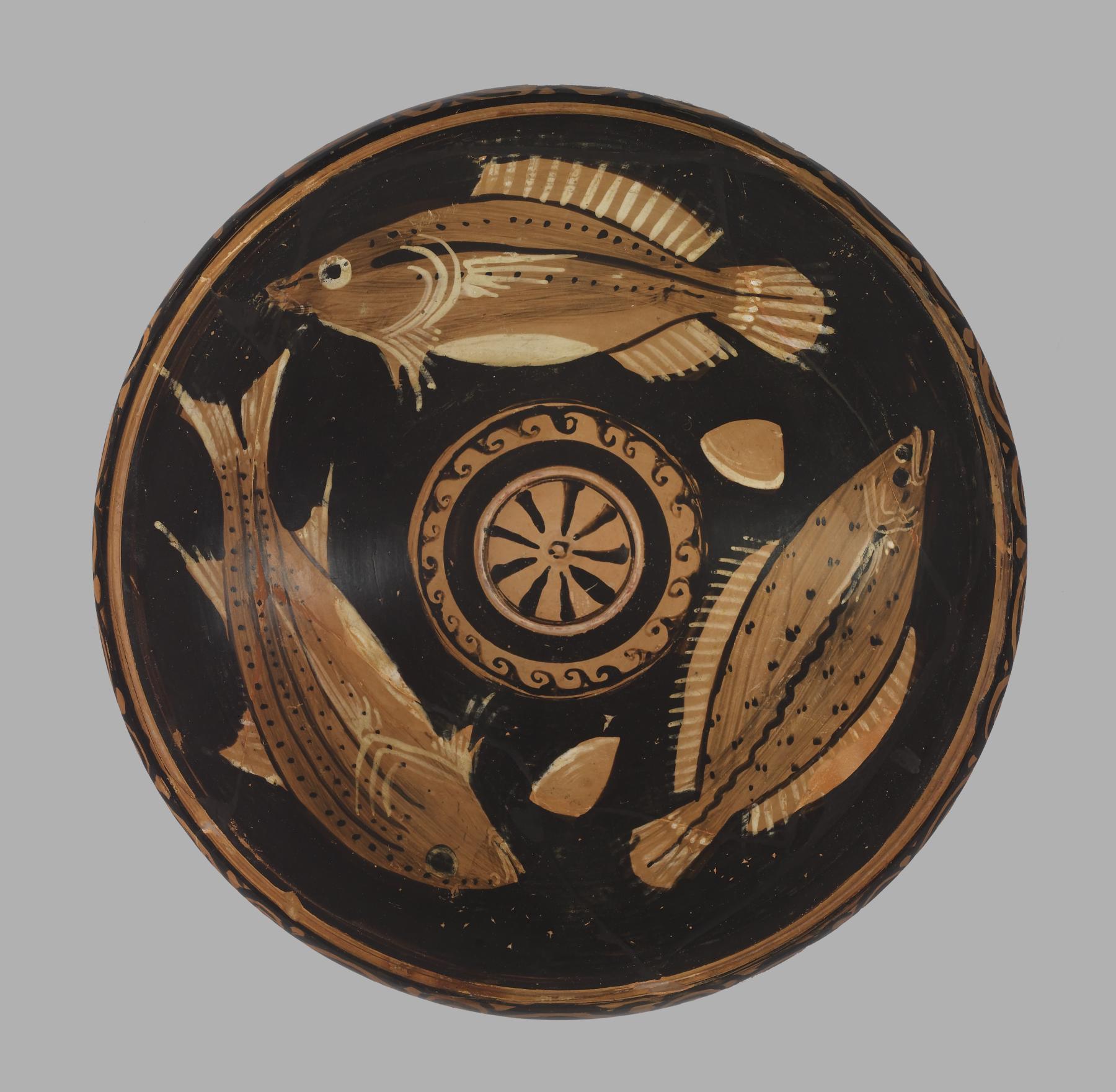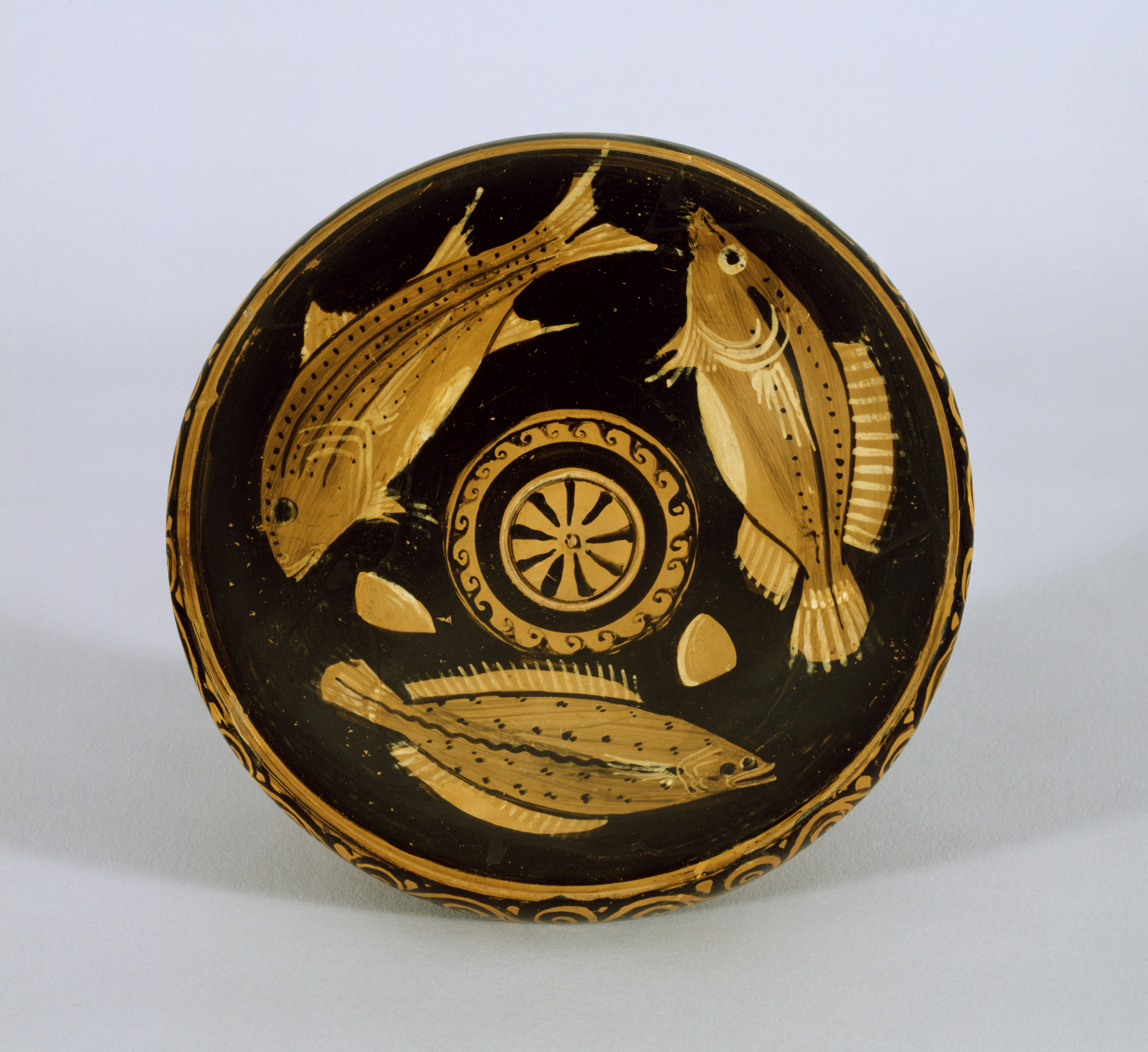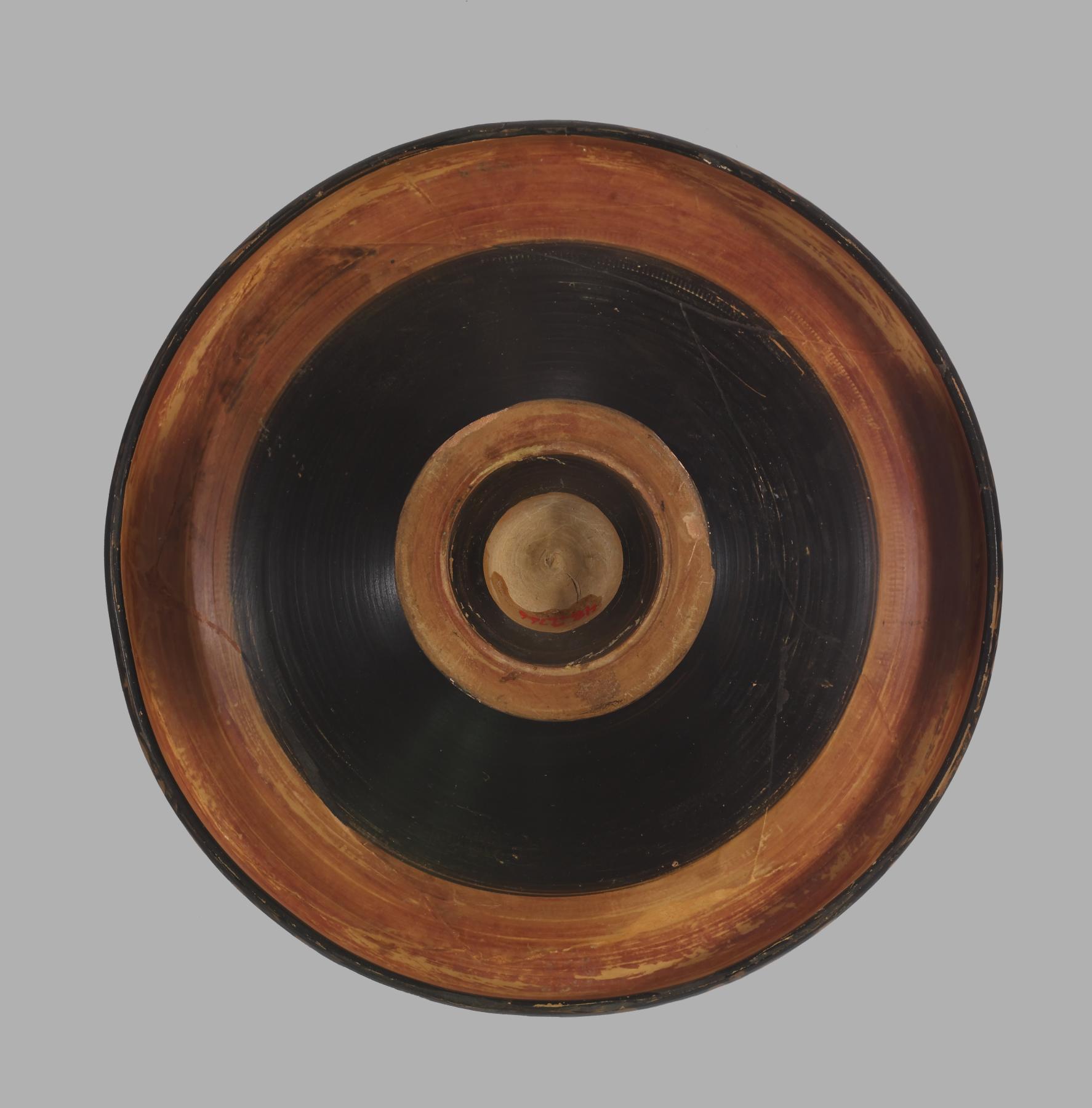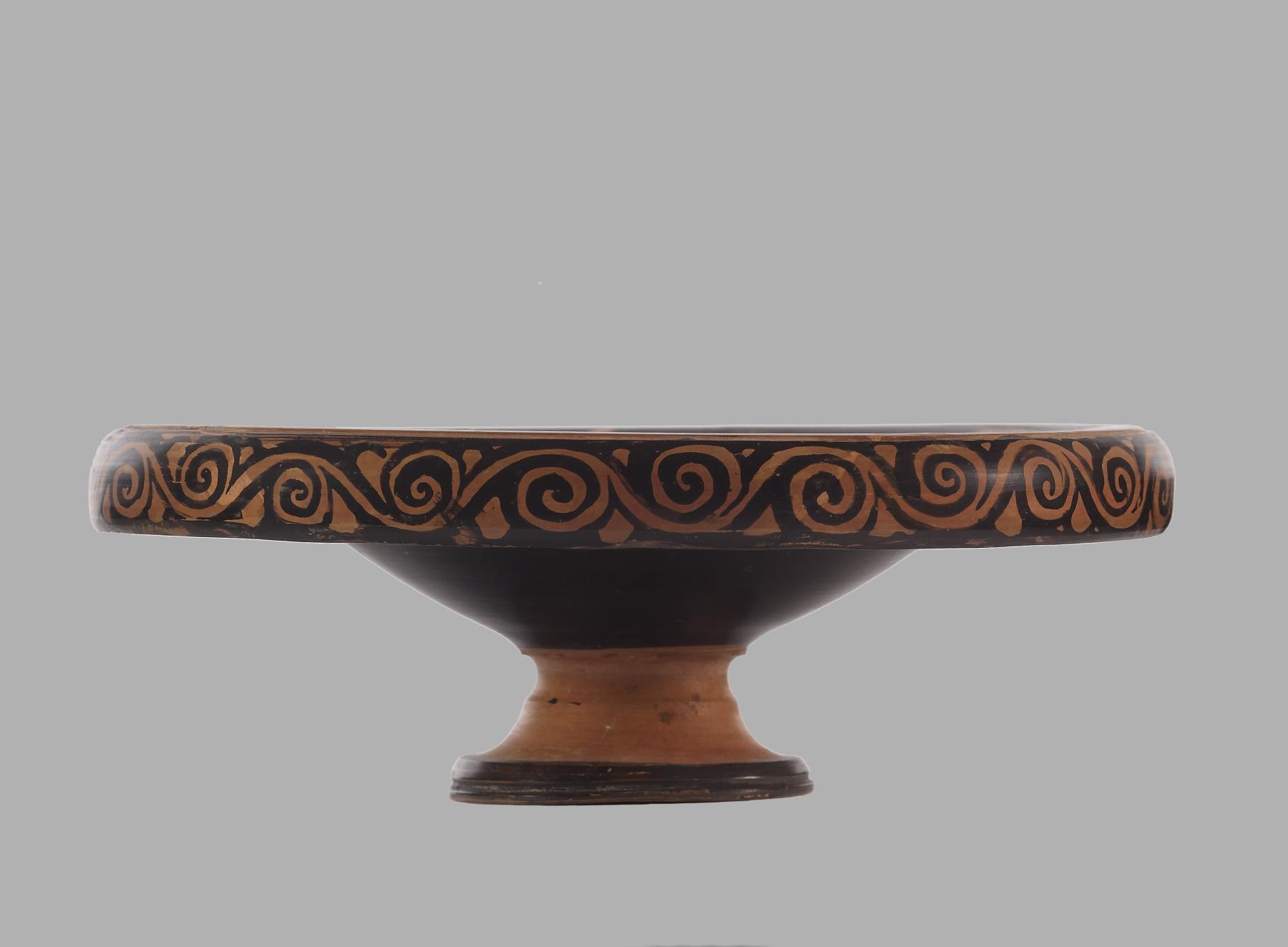Fish Plate
(Ancient Greece )
A red mullet, wrasse, flatfish, and two mussels decorate the surface of this plate; the background around the fish is glazed black. The central depression is divided into segments by black glaze, surrounded by a ring of black glaze, a ring of waves, and a thin reserved band. Details of the eyes, gills, fins, and bellies are added in white paint. A spiraling tendril decorates the rim of the plate.
First produced in potters’ workshops of Athens in the 5th century BCE, fish plates were especially popular in Magna Graecia (southern Italy) in the 4th century BCE. A wide range of aquatic life, including crabs, snails, shrimp, clams, squid, and even dolphins, along with a variety of fish, are depicted on fish plates. While it is not certain that the ancient Greeks ate all of these types of animals, fish bones have been found in excavation contexts with fish plates, indicating that the plate was used primarily for sea food. A plate such as this one may have been used as a communal serving platter, perhaps with a dipping sauce in the central depression.
Provenance
Provenance (from the French provenir, 'to come from/forth') is the chronology of the ownership, custody, or location of a historical object.
Münzen und Medaillen A. G., Basel, Switzerland, 1983; Marilyn and Herbert Scher, Pikesville, MD, 1983, by purchase; Walters Art Museum, 2003, by gift.
Geographies
Italy, Apulia (Place of Origin)
Measurements
2 7/8 x 8 1/2 in. (7.3 x 21.59 cm) (h. x diam.)
Credit Line
Gift of Marilyn and Herbert Scher, 2003
Location in Museum
Accession Number
In libraries, galleries, museums, and archives, an accession number is a unique identifier assigned to each object in the collection.
In libraries, galleries, museums, and archives, an accession number is a unique identifier assigned to each object in the collection.
48.2766








